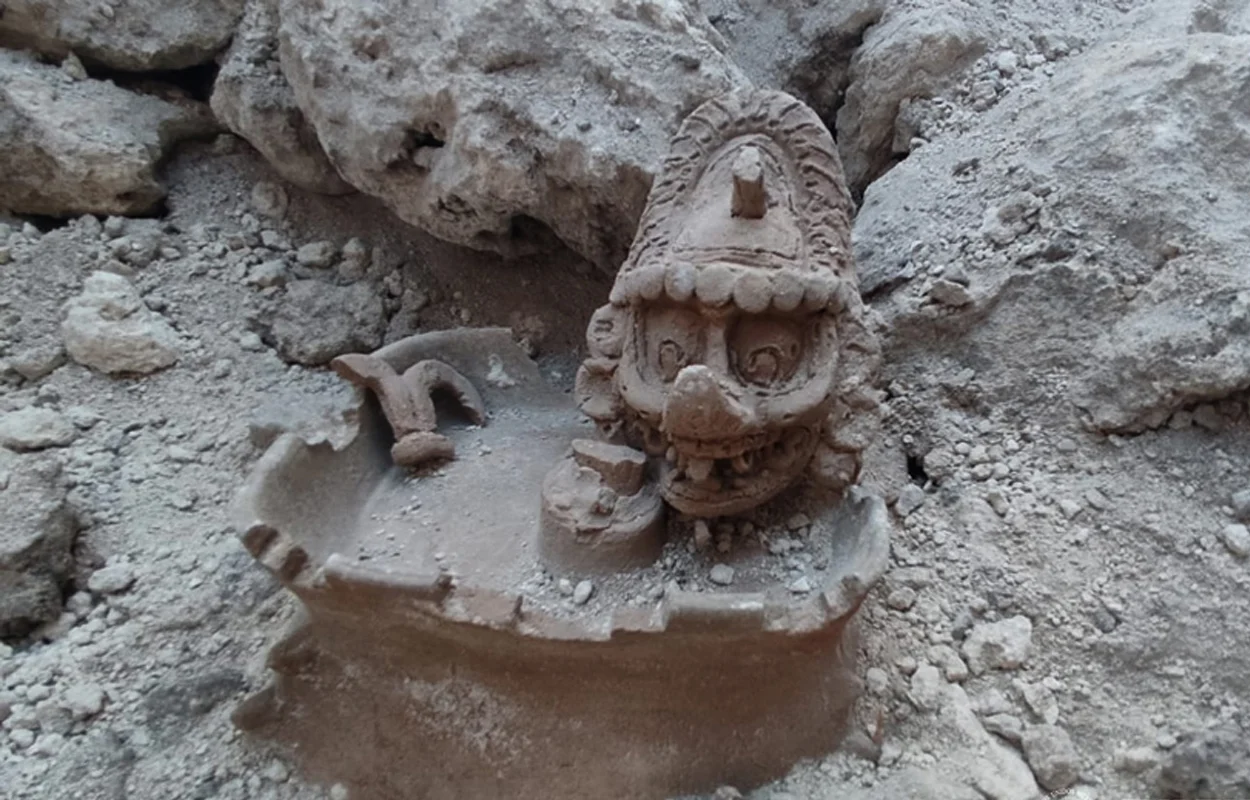Archaeologists from the National Institute of Anthropology and History (INAH) have uncovered a rare statue of Kʼawiil, the Maya lightning god.
Kʼawiil is associated with lightning, serpents, fertility, and maize, and is often represented having a zoomorphic head with large eyes, a long, upturned snout, and an attenuated serpent foot which represents a lightning bolt.
From descriptions of the Maya New Year rituals, written by Diego de Landa Calderón, a Spanish Franciscan bishop of the Roman Catholic Archdiocese of Yucatán, and depictions of these rituals in the Dresden Codex, it can be inferred that Kʼawiil was called Bolon Dzacab during the 16th century.
Although depictions of Kʼawiil can be found in Maya reliefs and the Dresden and Maya codices of Mexico, only three statues of Kʼawiil have been previously discovered, all of which come from the city of Tikal in Guatemala.
The latest statue was discovered during the construction of the Maya Train project, in section 7 on the route from Bacalar, in Quintana Roo, to Escárcega, in Campeche. The Maya Train is a 1,525-kilometre intercity railway that will traverse the Yucatán Peninsula, with construction scheduled to be completed in 2024.
The statue is part of an urn, whose body shows the face of a possible solar deity, with the head of K’awiil represented on the lid.
Prieto Hernández, Director General at INAH, said: “This finding is very important because there are very few representations of the god K’awill; Up to now, we only know of three in Tikal, Guatemala, and this is one of the first to appear in Mexican territory.”
Excavations in section 7 also revealed structures, including platforms and vaulted buildings, which the archaeologists plan to preserve and document.
Header Image Credit : INAH Campeche Centre







